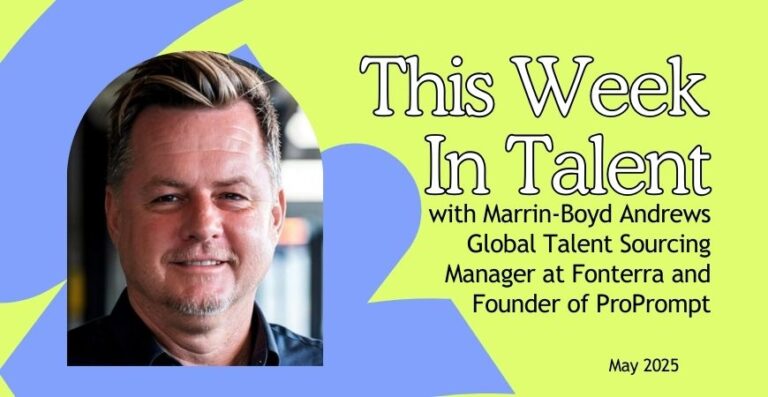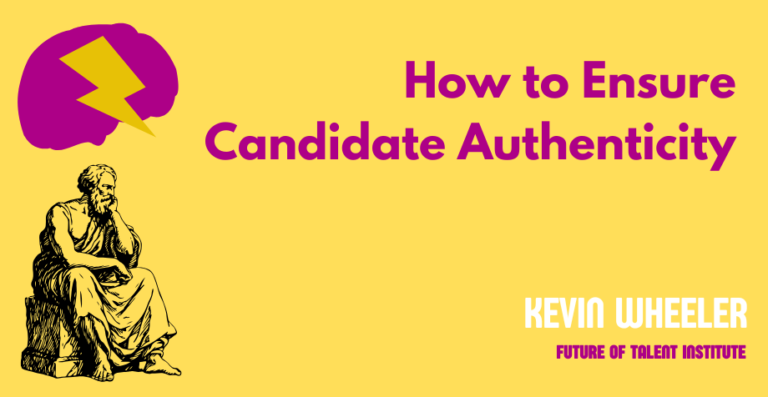This is the final part of the five-part blog series on how to transform recruitment marketing to ensure it creates impact and value for your organisation.
Part 5: Time to Replace Nurturing with Purposeful Engagement Plans
Keeping candidates warm and eliminating the candidate black hole experience have historically been the key objectives of recruitment marketing nurturing programs. The goal has been to keep candidates warm until you were ready to activate them and then push them through your conversion steps as fast as possible. To this end recruitment marketers built nurturing collateral distributed through digital channels and email drip campaigns mimicking the communication strategies of consumer brands. This model served its purpose. However, now that recruitment marketing is to be looked at to not just attract and keep warm candidates, but also to extract relevant data from them about their skills, interests, and career evolutions, the tactics for recruitment marketing engagement must evolve to more complex contact data enrichment strategies that will support the ever demanding need of the talent tech stack for more and more data. For additional detail on how I see recruitment marketing meeting this challenge see my first article in this five-part series, Transforming Recruitment Marketing. So far I have discussed how to create and leverage a candidate data map, and how to ensure you know your audience so that you can provide them value in exchange for asking them for more data. I’ve also explored the technology capabilities you should be adopting as a modern recruitment marketer in my article on the candidate data infrastructure. This week I am going to wrap up this series by talking about how you pull these pieces together by executing a purposeful engagement strategy.
As a recruitment marketer its important to have a multifaceted approach to determine when, how, with what and to whom you should be engaging. Developing and executing an attraction strategy is often much more familiar ground for recruitment marketers, because in the highly transactional world of recruiting, lead generation has often been prioritized over candidate relationship development. However, the future of recruitment marketing engagement strategies will need to be focused on building deep, trusted relationships with candidates that extend over years not weeks or months. Today’s workforce is nimbler, moving from job to job with more frequency, evolving their skills and capabilities at a pace unmatched by previous generations. In addition, companies’ needs are becoming more dynamic and are also evolving quickly. Skills that may not be in demand in your organization this month may be critical in one or two years. The companies that will have the advantage are those that have developed a comprehensive strategy for engaging talent over time, building trusting relationships with them and extracting insights and data from them that allow the company to be the first to know when a candidate has moved from non-relevant to hot and in addition have the relationship with that candidate to woo them quickly. Your engagement strategy needs to be purposeful, focused on providing value to candidates in exchange for collecting the right information at the right time to make it actionable. The reason the candidate engagement process is the last piece of the puzzle in creating a modern recruitment marketing function, is because it requires each of the other pieces, a contact data map, an understanding of the audience and a technology stack that supports a candidate data infrastructure, in order for it to be successful. Here are the four main components you need to address when building a candidate engagement strategy.
1. What will your interaction strategy be?
2. How will you prioritize your audience or recognize which candidates to prioritize throughout your engagement?
3. What collateral will you deliver, how will that collateral be of value to your audience and what will be your call to action that you will solicit in return?
4. How do you integrate assessment and screening into your engagement strategy?
Defining your Interaction strategy
Interaction is the flow and breath of a relationship.
Your interaction strategy has one key goal, build a trusted relationship with candidates, so they will provide you with information about themselves. Through decisions like who you interact with, how personal the interaction is, who drives the engagement and the cadence you execute it on, you are setting the tone of the relationship. Your audience will walk in with a predefined expectation for your engagement, most likely based on their previous experiences and what they are looking to get out of the interaction. A good interaction strategy is purposeful and thus ends up redefining the relationship expectations with your audience through its consistency and value. Here are some of the decisions you need to make and incorporate into a holistic interaction strategy. Each of these questions should be thoughtfully considered and planned by reflecting on the audience insights you have, plus an understanding of your contact data mapping.
ð What are the key touchpoints you should create interactions for that will generate and investment in the relationship?
ð Which interaction touchpoints should you include interactions that will be perceived as personalized and which ones can be more generic?
ð Which interactions can you automate or create workflows to drive?
ð What should be the cadence of the interactions? Does the cadence change over time or based on certain candidate behaviors?
ð Who should be the person or recruiting role who is conducting the interaction with the candidate?
Prioritizing your candidates
All candidates are important. Even the ones who are not relevant to your talent team right now.
Prioritization is not about choosing who to care about and who not to care about, but instead it’s about being purposeful about how you leverage your resources in the engagement process. Not only is one size a bad idea for building meaningful relationships, no one feels like you are thinking about them if everyone is pushed the same generic engagement as everyone else, but at an even more tactical level you are not looking for the same information from every candidate. Depending on what you need from the candidate, your approach and method of interaction is likely to be very different. Candidates who are easily identifiable as top talent for known relevant roles, should likely be prioritized to receive more personalized and direct engagement geared at moving them into the conversion stage, where candidates who fall into a grouping of interesting, but you don’t know how to place them yet, may be better candidates for automated engagements focused on getting them to complete their profile or basic assessments. To think through how you will create and execute a prioritized interaction strategy here are some questions to think through.
ð What audience segments are most important for your overall talent strategy? For example, do you want to make sure you give special attention to early career professionals, referrals or alumni?
ð How would you know if a candidate belonged to one of your segments? What Information / data would you refer to in order to make that determination?
ð What are your options for managing interactions at scale?
Prepare to Support Your Interactions with Collateral
We too often associate good engagement collateral with good advertising content.
The number one fatal flaw of most recruitment marketing engagement executions is that they are filled with content designed to make the company delivering it feel good about themselves instead of content and information that is valuable to their candidates. This happens because we too often associate good engagement collateral with good advertising content. I am not proposing that you don’t proactively generate and distribute content to your candidates that makes them want to work for you, but know that what you want to tell them and what they want to know about may be two very different things. The benefits team may be super proud of their maternity parking spaces and all-day cereal buffets, but your target audience is looking for something that goes deeper. They are looking for a “what’s in it for them”. The main difference between advertising content and engagement content is that engagement content should deliver something of value that entices the receiver to want to engage with you more and in an in-depth way. Advertising content is aimed to drive conversion actions and engagement content is aimed to drive in-depth relationships, or at least the perception of an in-depth relationship. The number one goal of your engagement collateral is to entice the recipient candidate to want to tell you more about themselves. You want their data. You need their data. You must deliver something to them that feels valuable enough to elicit their willingness to fork over that data. Ping pong tables in the café is not it. Some examples that may be valuable content for your audience include opportunities to engage with real live leaders in your organization, skills workshops, community best practice sharing etc. Think about what emails you delete from your inbox everyday from the vendors looking to get you to engage with them. Your goal is to be like the best of them and avoid becoming like those in your delete folder. Consider the difference between what you receive that is valuable to you and what you receive that is not and learn from it. Here are some key questions to consider when you start building your interaction collateral.
ð What is your message? What do you want to say to the candidate at that moment and in that interaction?
ð How should you deliver your message so that it will be received and interacted with in the way you intend? Define your delivery vehicle carefully.
ð Engagement means there is a two-way dimension to your interaction. What will be your call to action or mechanism to engage or solicit information form the candidate?
Leveraging assessments as a recruitment marketing tool
We are realizing the data enrichment potential of assessments to late in the recruiting process.
Today assessment strategies are often employed during the interview process and sometimes leveraged to support screening activities by sourcers. The challenge with this approach is that the data assessment capabilities can provide to a talent acquisition team to support matching and sourcing is not realized until too late in the process. This need for assessment data earlier in the talent acquisition process however needs to be balanced with over taxing the candidate relationship too soon in the engagement or generating false expectations. I for one believe assessments if planned correctly can be layered effectively into a candidate engagement strategy throughout the lifetime of a candidate’s relationship with a company. To do this you need to be very purposeful in where you include an assessment, what type of assessment you use and how you collect and manage the assessment data. The biggest hurdle that can occur is that by not refreshing assessment data at the right cadence you may misrepresent a candidate’s skills or capabilities. An assessment of a candidate from a year ago is not likely to be accurate in some sectors or job profiles for example because the rate at which new skills are achieved or advanced. Consider using self-disclosure assessment questions as part of the initial interactions you have with candidates. For example, how can you take the list of skill disclosures you have and gather that information in a conversational manner during your early engagements versus by having candidates complete a checklist or form during the application process. You can also consider leveraging assessment to provide value back to candidates. For example, would it be worth it to a candidate to take a competency assessment and when completed be provide free of charge a link to a recorded webinar on the topic so they can enhance their personal skill set? Here are some considerations when thinking about including assessments in your candidate engagement strategy.
ð How could you incorporate screening throughout your relationship with a candidate?
ð Which touchpoints in you engagement relationship would benefit from the inclusion of an assessment?
ð How would an assessment be used to augment your candidate insights?
ð What could an assessment tell you about a candidate and how could that information be useful?
ð How can you apply assessments to validate information a candidate self discloses about themselves?
ð What value can a candidate get from completing and assessment for you?
This wraps up my five-part series on transforming recruitment marketing. If you missed on e of the articles, please check out the links below. I’m excited about where recruitment marketing has the potential to add value in the future. The challenge will be if we can move quickly from our lead generation and advertising focus and embrace our role as custodians of the candidate pipeline and insight. The challenge is both exciting and attainable given the advances in technology that are available to support us, and the plethora of pioneers working to experiment and build the professions acumen.
Part 2: Candidate Data Maps, The Most Important New Tool for Recruitment Marketing Teams
Part 3: Knowing Your Target Audience Means Knowing What They Value and Why
Part 4: The Candidate Data Infrastructure: Collect, Organize, Connect and Analyze Candidate Data
Cover image: Source
This article first appeared on LinkedIn on 2 February 2021.






